In this tutorial, we will be showing you how to install and use Spotify on your Steam Deck.

Spotify is one of the most popular music streaming services and one of the few with a native application for Linux-based operating systems like SteamOS.
Thanks to Valve not locking down the Deck, we can easily install applications unavailable through the Steam Store, such as Spotify.
Installing Spotify will allow you to easily listen to your music while you play through your games.
You can even install additional plugins that make playing music from Spotify a much nicer experience on your Deck.
Before continuing, please note that you will need to have a password added to your Spotify account. Logins using Facebook, Google, or Apple may run into issues. Luckily, you can add a password without breaking support for any of the other login methods.
How to Install Spotify on your Steam Deck
The following sections will show you a simple way to install Spotify on your Steam Deck.
We will also show you how you can run this music streaming service alongside your games so you can listen to your own music.
Changing to Desktop Mode
1. We must change to desktop mode before installing Spotify on the Steam Deck. Desktop mode will allow us to install software unavailable through the Steam store.
First, open the Steam menu by clicking “STEAM MENU” or pressing the STEAM button.
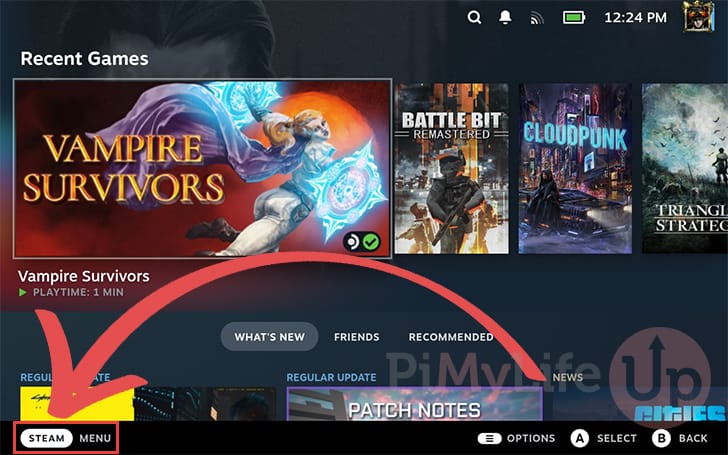
2. The next step is to open the Power menu. This option is located at the bottom of the Steam menu.
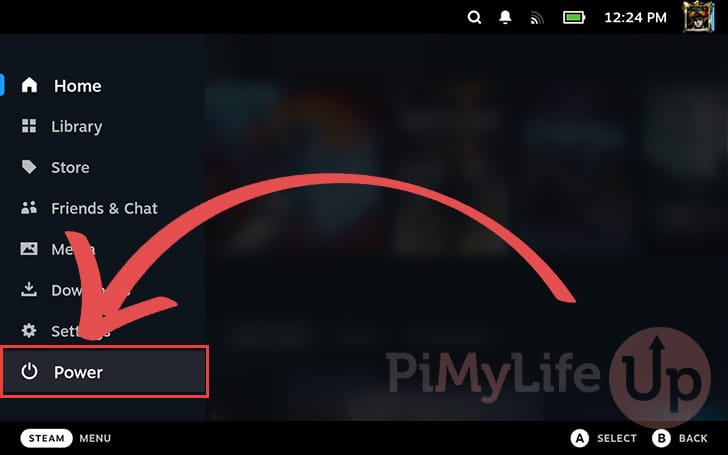
3. With the Power menu open, click the “Switch to Desktop” option.
Your Steam Deck will exit gaming mode and load up its desktop interface.
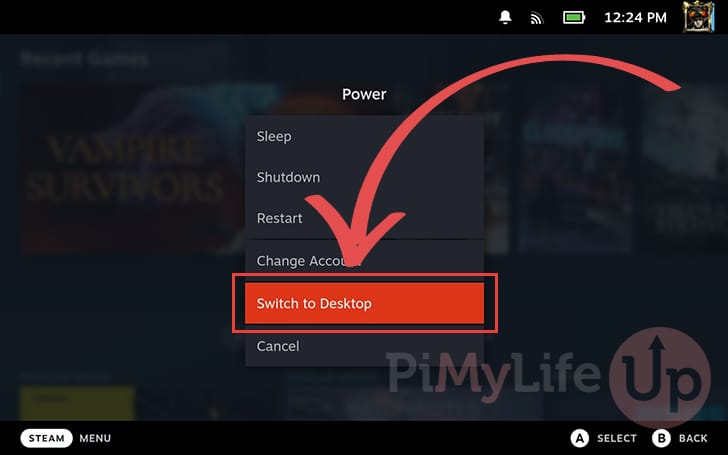
Using Discover to Install Spotify on your Steam Deck
4. Now that you are in desktop mode, you must open the Discover application. We will be using this application to install Spotify to the Steam Deck.
You can open this app by clicking the shopping bag icon in the taskbar.
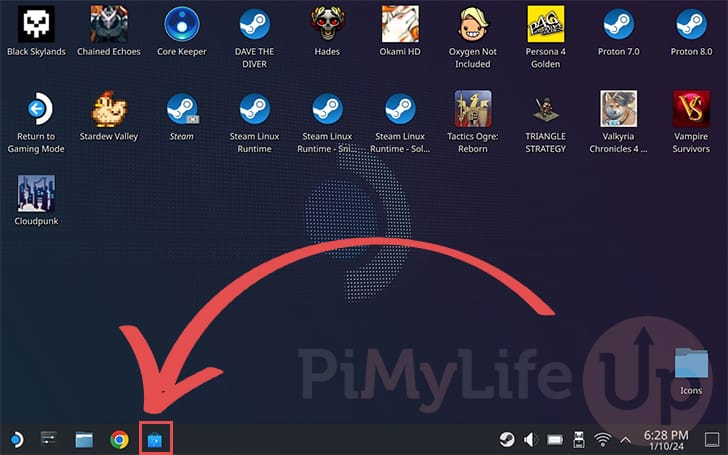
5. After opening the Discover app, you will want to switch to the “Search” screen.
The Spotify app also might be shown under the “Most Popular” list of applications.
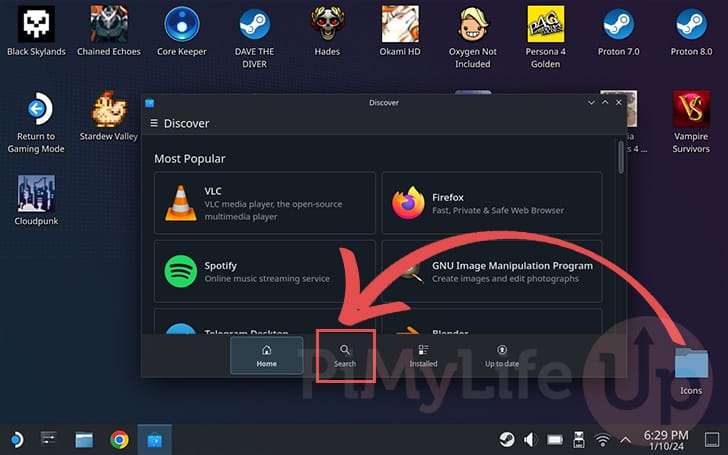
6. Once you have changed to the search screen, use the search bar to look for “Spotify” (1.).
After the search has been completed, you should see “Spotify” as an option. Click it to open its Discover page (2.).
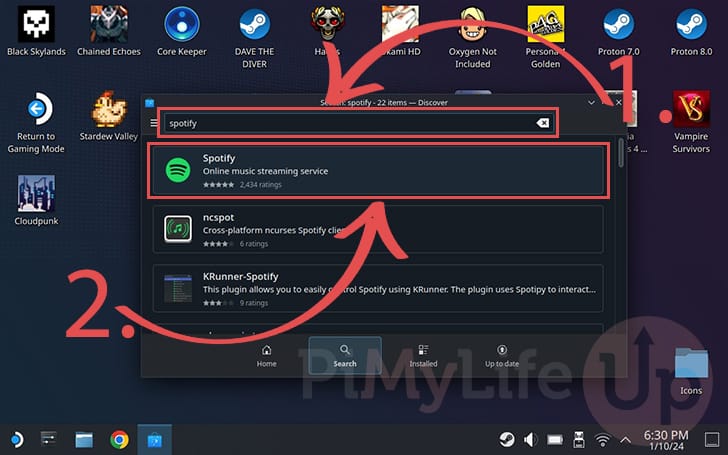
7. Once the Spotify page is open on your Steam Deck, click the “Install” button.
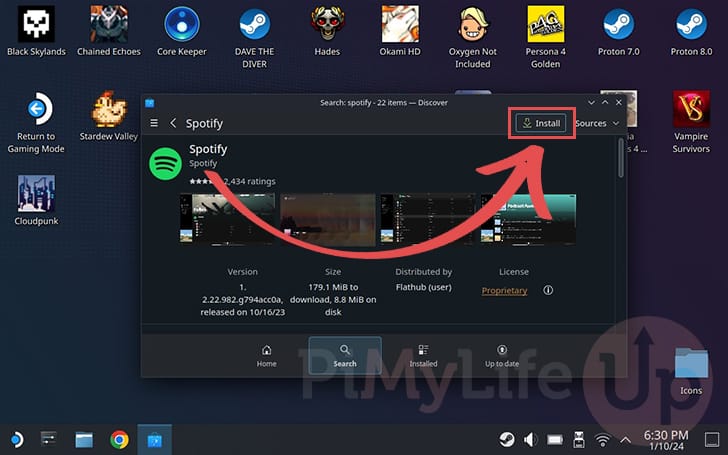
8. You can launch the Spotify application by clicking the “Launch” button.
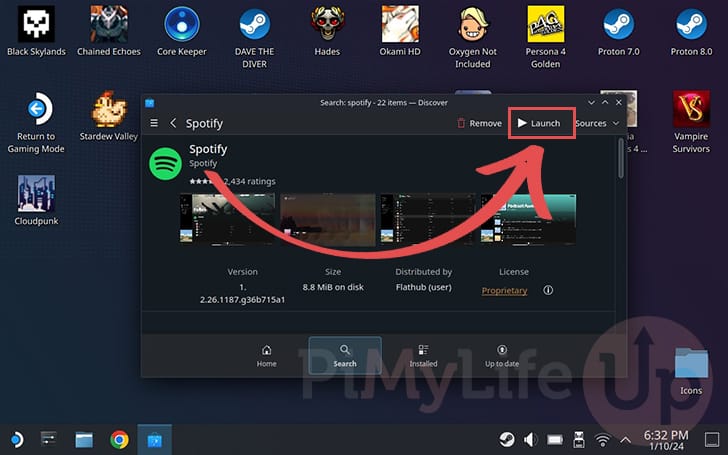
Log in to Spotify
9. With Spotify now open, follow the prompts to log in to your account. Logging in to Spotify now rather than within the Steam Deck’s gaming mode is easier.
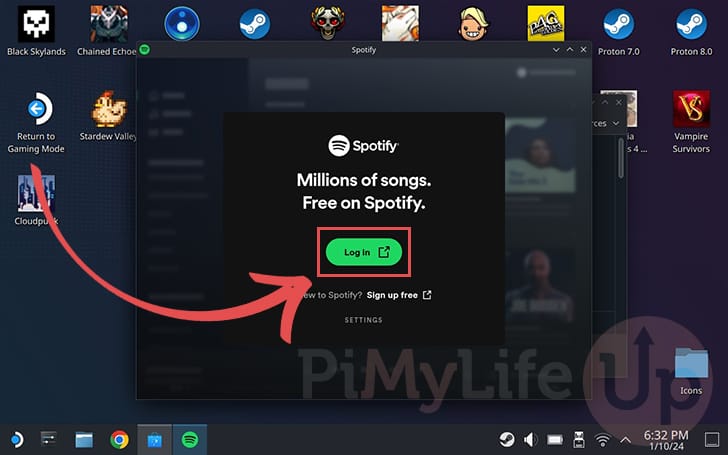
10. At this point, you should hopefully have this music streaming application installed on your device.
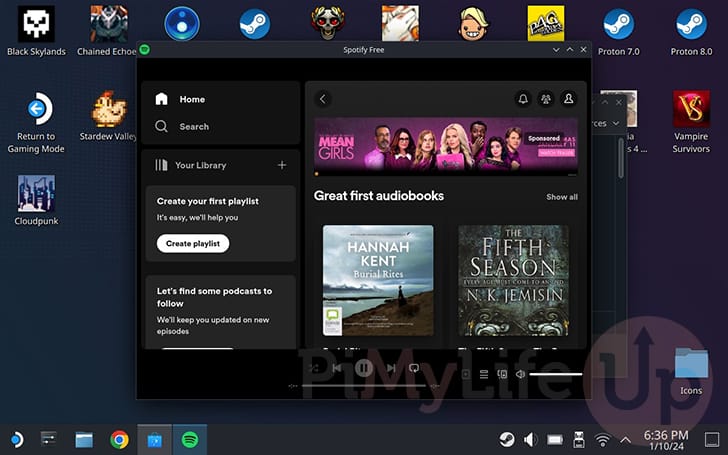
Adding Spotify to your Steam Deck Library
11. Now that you have logged in to Spotify, your next step is to add the application to your Steam Deck library as a non-steam game.
To add a game to your library, you must open the desktop Steam client. You can open this by double-clicking the “Steam” icon.
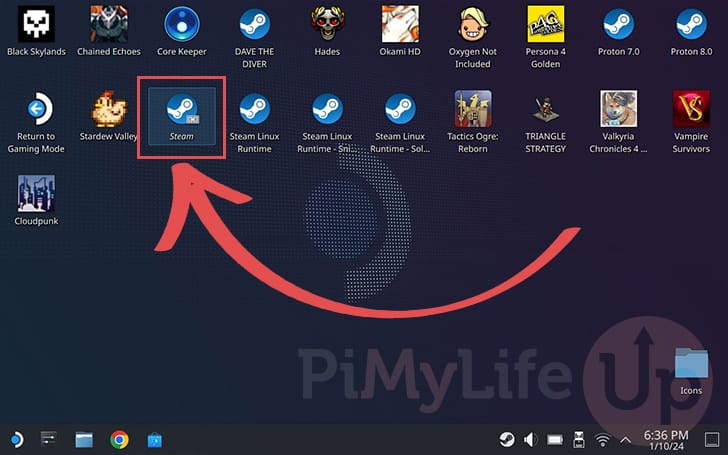
12. With the Steam client open, click the “Add a Game” button (1.) open in the bottom-left corner.
Next, click the “Add a Non-Steam Game...” option (2.).
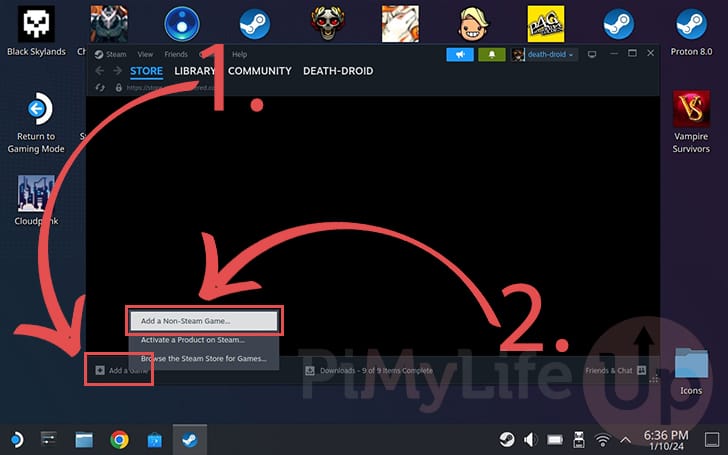
13. With the “Add Non-Steam Game” dialog open, scroll down and tick the checkbox next to the “Spotify” option (1.).
To add the Spotify client to the Steam Deck’s library, click the “Add Selected Programs” button (2.).
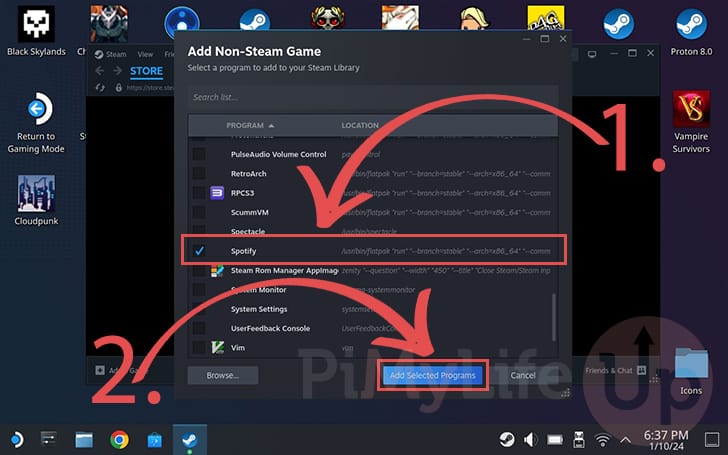
Return to Gaming Mode
14. With Spotify now added to your Steam Deck, you can return to gaming mode by double-clicking the “Return to Gaming Mode” icon on the desktop.
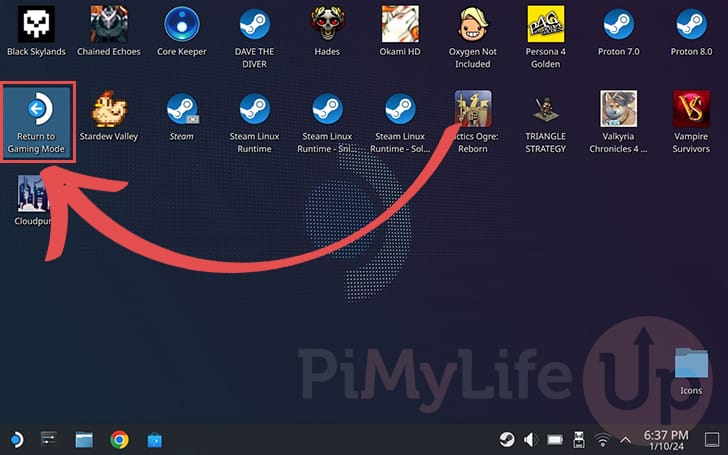
Finding Spotify on your Steam Deck
15. Once you are back in gaming mode, you will want to change to your Steam Deck Library.
The easiest way to get to this is by opening the Steam menu and selecting the “Library” option.
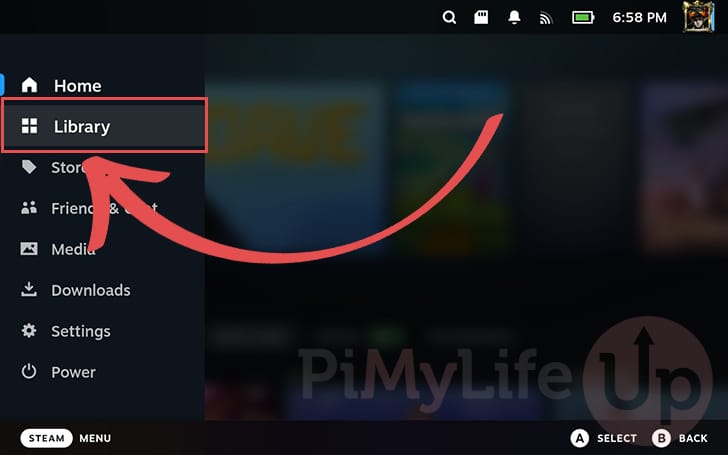
16. Once in your library, you will want to change to the “NON-STEAM” tab (1.).
After swapping to this tab, you should find “Spotify” (2.) within your library.
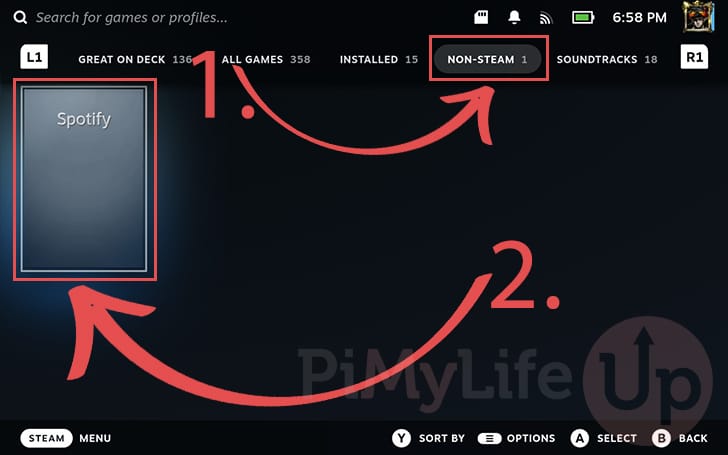
17. All you need to do now to launch Spotify on your Steam Deck is click the “Play” button.
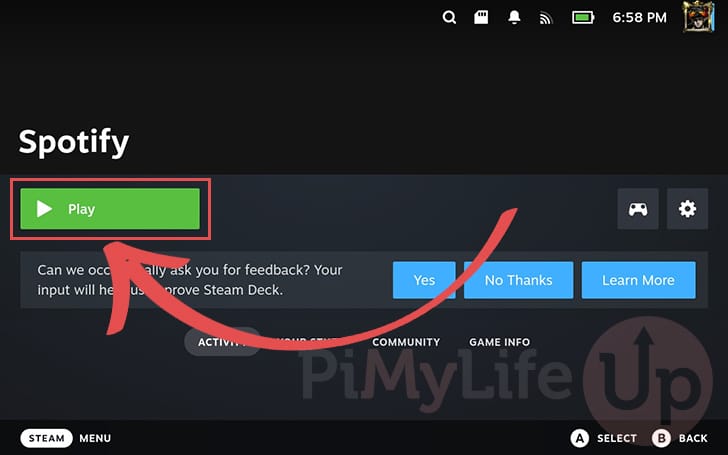
18. You can now access Spotify on your Steam Deck and can start using it to play your music.
Of course, being on the Deck, you will probably want to play your music while playing a game. Luckily, the Steam Deck allows you to run multiple applications simultaneously.
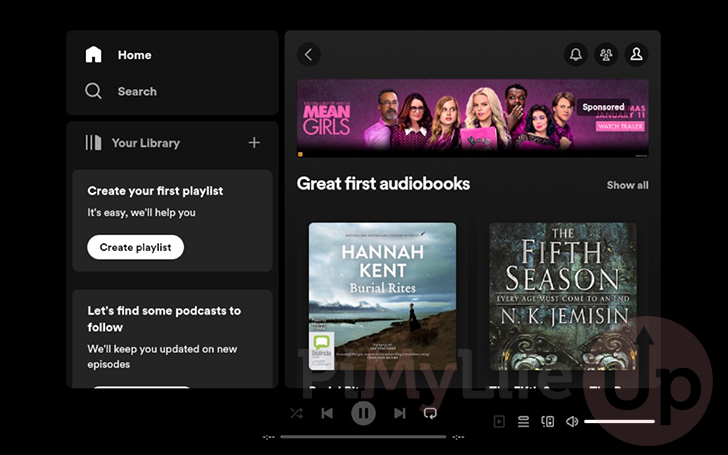
Running Spotify Alongside a Game on the Steam Deck
19. With Spotify open on your Deck, bring up the Steam Menu by pressing the STEAM button.
With the Steam menu open, you can open your library and launch the game you want to play. Spotify will remain open in the background.
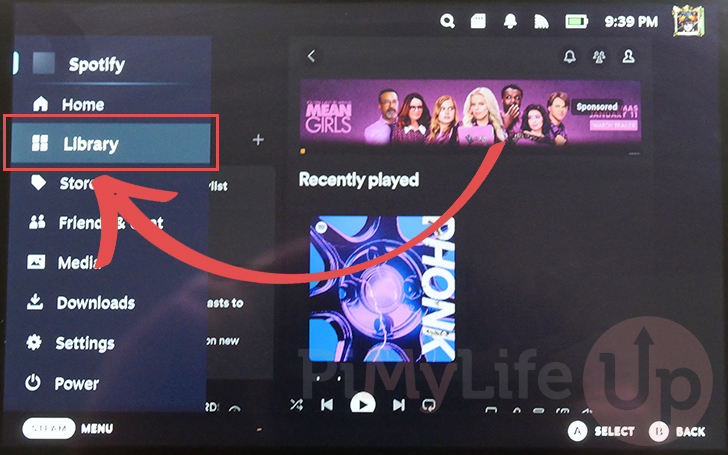
20. Below you can see that we have a game running on our Deck. While Spotify isn’t being shown, it still plays music in the background.
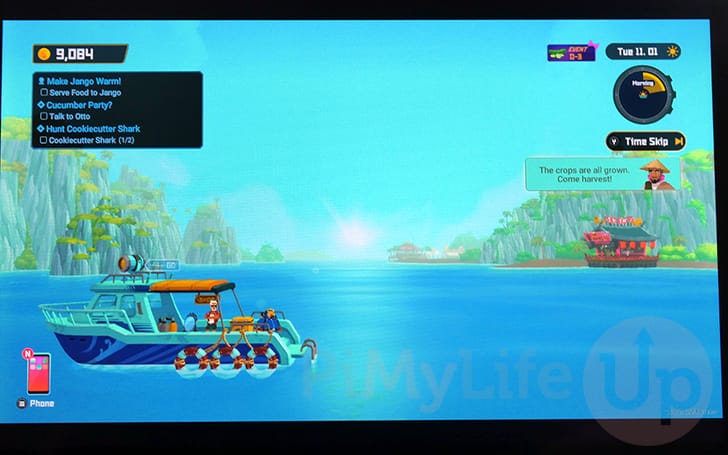
21. If you bring up the Steam Menu again on your Deck, you will see both the game and Spotify listed in the top-right corner.
You can switch between Spotify and your game at any time. However, you can improve this experience further, as seen in the next section.
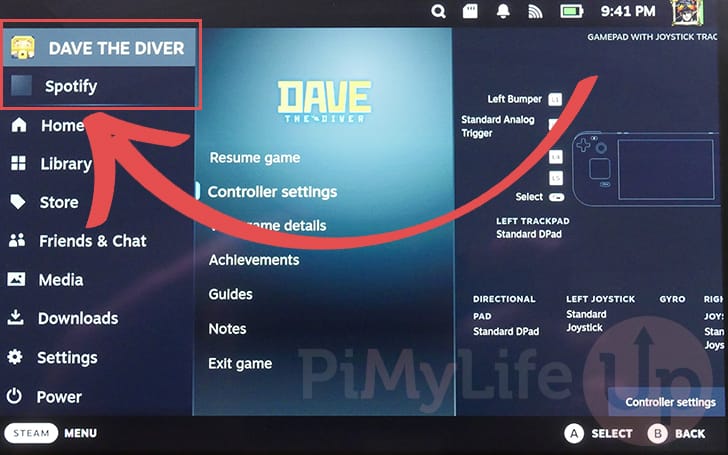
Improving Spotify on your Steam Deck
In this part of the guide, we will show you how to improve your Spotify usage on the Steam Deck. We will be achieving this by installing a plugin called MusicControl.
This plugin will allow you to control your music without returning to the Spotify app. Of course, you will still need to have Spotify open simultaneously with whatever game you are playing.
Installing the MusicControl Plugin
1. Before proceeding further with this section, you must have Decky Loader installed on your Steam Deck.
Decky Loader is a plugin manager that allows you to add extra functionality to the Deck’s gaming mode interface.
2. Once you have Decky Loader installed, you will want to bring up the quick access menu by pressing the three dots button on your Deck.
If you are unsure what button we are talking about, look at the photo below.
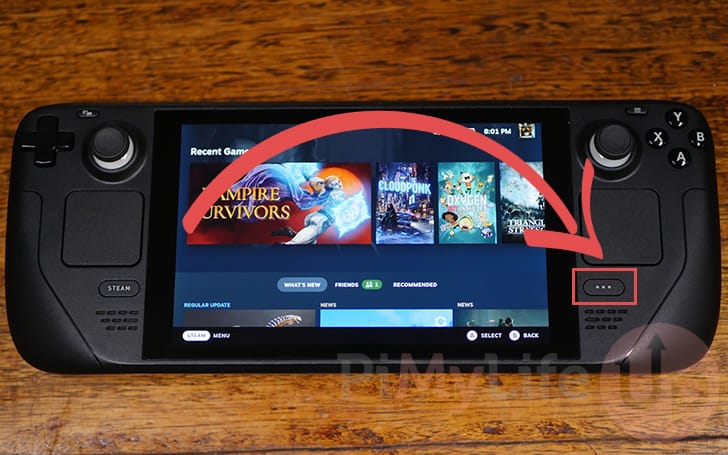
3. With the quick access menu open, open the Decky menu. This app is represented by the little plugin icon (1.).
Once you have Decky on your screen, open its marketplace by clicking the little marketplace icon (2.).
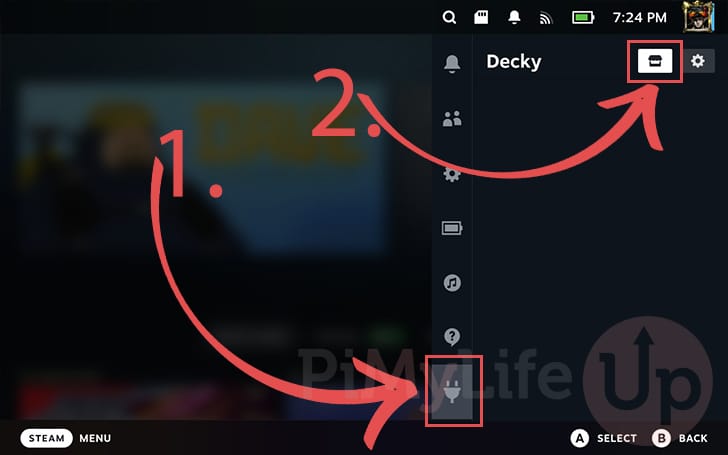
4. With the Decky marketplace open, scroll down until you find the “MusicControl” plug.
Once you have found this addon, click the “Install” button.
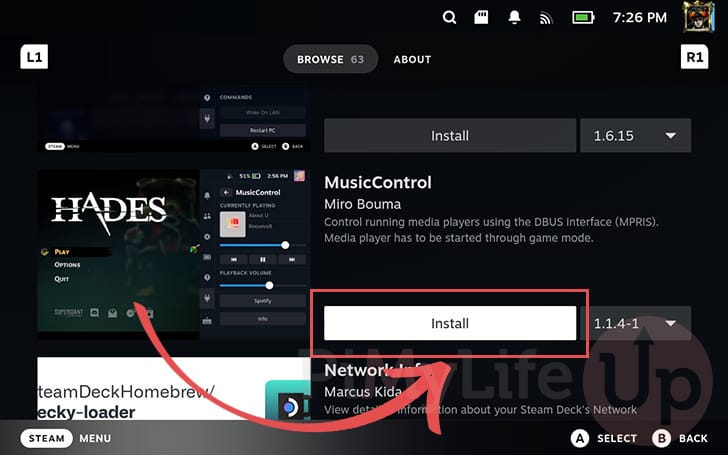
5. You will be asked if you really want to install the addon. Click the “Install” button to continue.
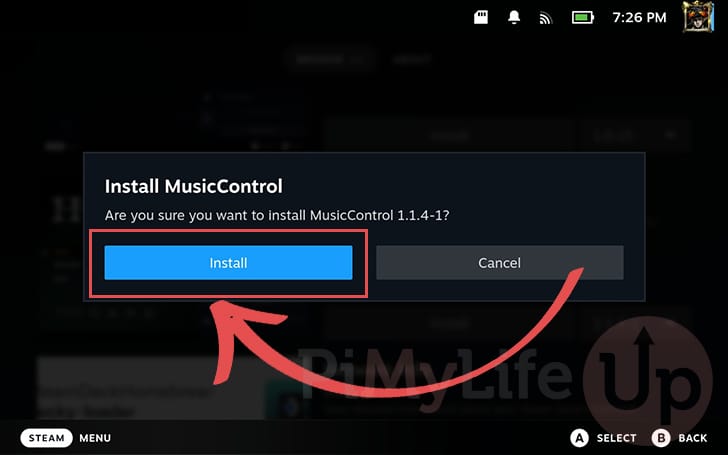
Using MusicControl to Control Spotify
6. Once you have MusicControl installed on your Steam Deck, you can use it to control Spotify.
With Spotify running on your Deck, you can now access “MusicControl” through Decky.
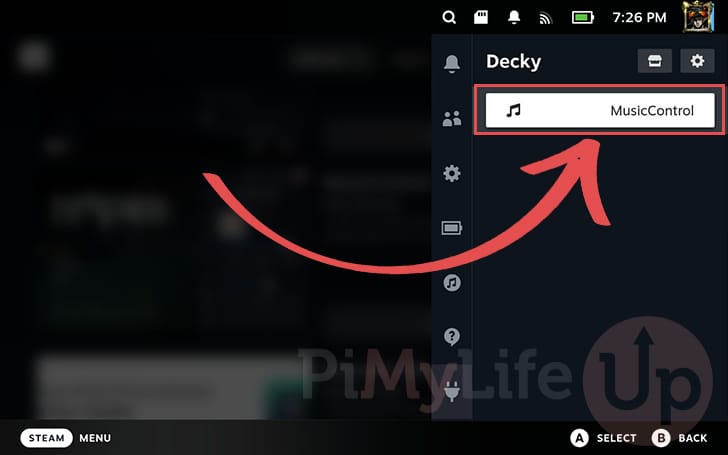
7. Once this addon is opened, you can see the current playing song and media controls.
You can skip songs, adjust the playback volume, and more using these controls.
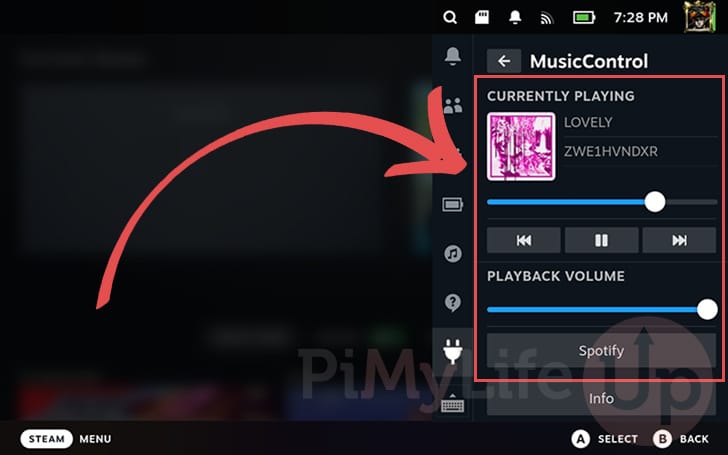
Conclusion
At this stage, you should hopefully have Spotify installed and running on your Steam Deck.
In this guide, we have shown you how you can run this music streaming service alongside your games, as well as a neat plugin you can install to make playing your music easier.
Please feel free to drop a comment below if you have had any issues getting Spotify to work.
If you found this tutorial to be helpful, we recommend checking out our other Steam Deck tutorials.










Need faster help? Premium members get priority responses to their comments.
Upgrade for Priority Support